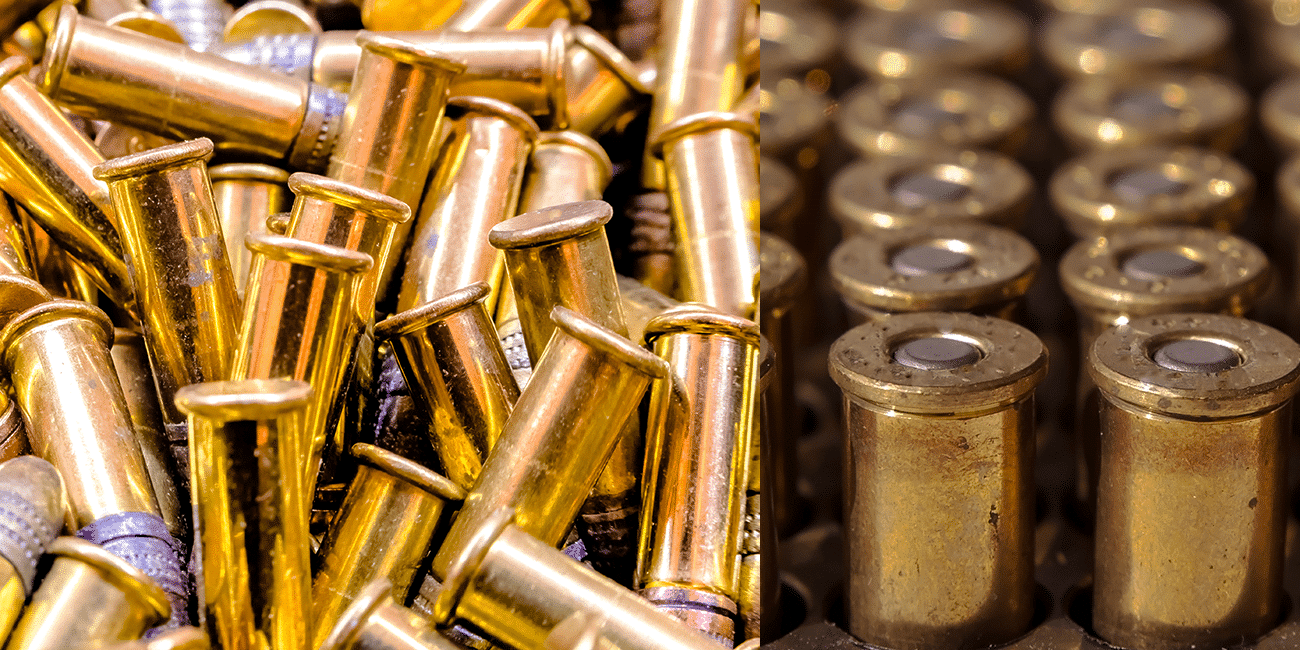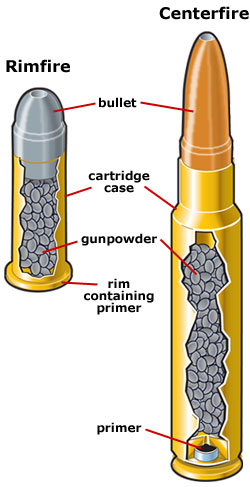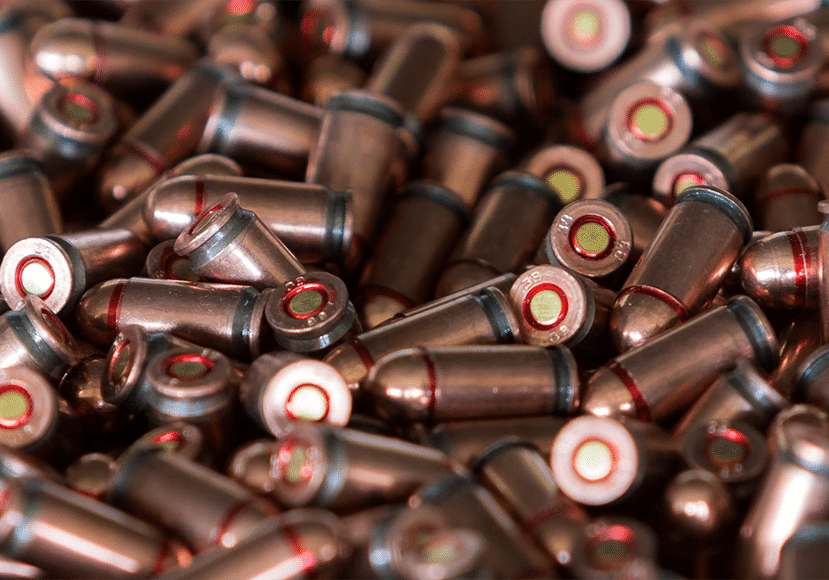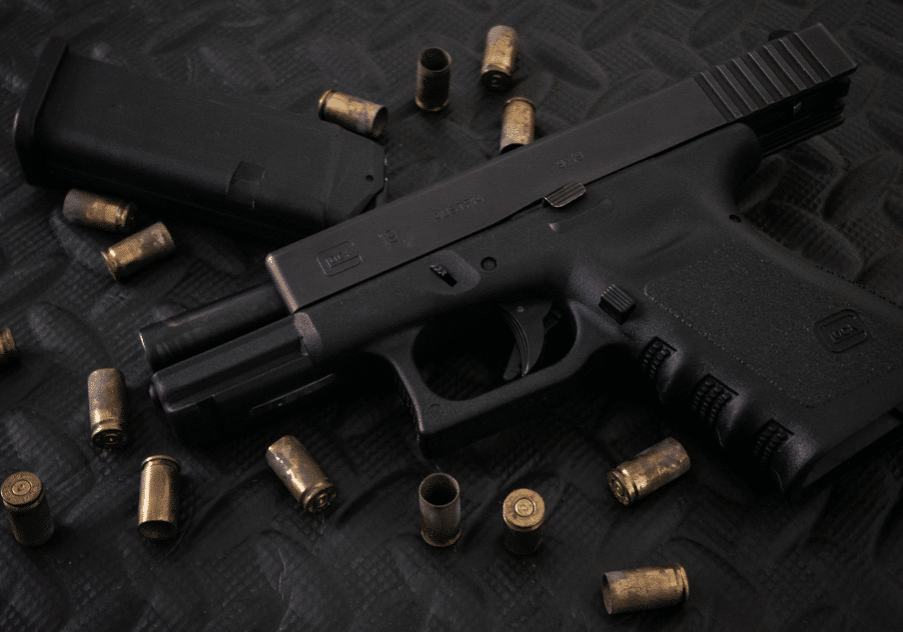Rimfire vs Centerfire Ammo | Ultimate Beginner’s Guide

Modern ammunition comes in a wide variety of shapes and sizes, but generally exists in one of two forms: rimfire and centerfire. In this guide, we'll explain the differences between rimfire vs centerfire ammo, while explaining the pros and cons of each option.
So what's the difference?
Rimfire vs Centerfire
The answer has to do with the location of the ignition primer on the head of each round. Both rimfire and centerfire cartridges consist of the same four parts: a primer, a propellant (e.g. gunpowder), a bullet, and a case to hold them all together. Every cartridge also works in fundamentally the same way: the gun’s firing pin strikes the primer and creates a small explosion, which ignites the gunpowder and propels the bullet out the barrel.
Note: It is common to hear people refer to a round or cartridge as a “bullet,” but a bullet is technically just the projectile component of a cartridge.

The difference between a rimfire cartridge and a centerfire cartridge is the location of the primer on the head of the cartridge. Rimfire cartridges have the primer spun into the rim of the cartridge head, while centerfire cartridges have the primer in a metal cup located in—you guessed it—the center. By extension, firearms that use centerfire ammunition strike the cartridge in the center, while firearms that use rimfire ammunition strike the cartridge somewhere along the rim.

The vast majority of modern ammunition is centerfire. Any common ammo larger than .22 caliber is more or less guaranteed to be a centerfire design. This includes ammunition for handguns, rifles, and shotguns.
But rimfire ammunition is still quite common, particularly for use in .22 caliber firearms. In fact, the .22 LR cartridge is by far the most popular ammunition in the world today in terms of the number of units sold.
Now that you know the technical differences between rimfire and centerfire ammunition, we can give you some more information about each ammo type, including their pros and cons.
Basics of Rimfire Ammunition
First up is rimfire ammunition, which was created in 1845 by a French inventor named Louis Nicolas Auguste Flobert. Flobert’s original design was intended for use in indoor shooting ranges and consisted of a percussion cap directly attached to a bullet, with no other propellant in between. Today’s .22 BB and .22 CB ammunition still use this same design, but in 1857, some manufacturers began using black powder to facilitate greater bullet velocities.
Early rimfire ammunition was available in a variety of calibers, from .22 and smaller all the way up to 0.58. However, today it is rare to see rimfire cartridges larger than a .22. This shift occurred primarily because of the introduction of smokeless powder in the late 19th century.
Smokeless powder generates much higher pressures than black powder does, which presents problems for the rimfire design. Rimfire rounds are made of thin brass to ensure that the firing pin can crush and ignite the primer spun within the case. Large-caliber rounds required too much powder for rimfire cases to be able to handle without blowing apart, so smaller rounds became the norm for this design.
Rimfire Ammunition Pros and Cons
By now you’ve probably figured out one of the biggest downsides to rimfire ammunition is that it only comes in calibers of .22 and below. If you’re interested in larger calibers, centerfire ammunition will be your only option.
An additional downside of rimfire cartridges is that they cannot be reloaded and reused. Rimfire ammo’s characteristic thin brass casing makes the cartridges quite fragile, which is why rimfire cartridges become permanently warped after being fired.
Yet another shortcoming of rimfire ammunition—as anyone who’s spent much time shooting a .22 will certainly be familiar with—is that the cartridges are known to have reliability issues. This characteristic makes rimfire ammunition less appealing if you are looking for a firearm for self-defense purposes, as reliability is paramount in a self-defense situation. With that said, .22 calibers are generally not even thought to be sufficient for self-defense, except potentially as an option for those with disabilities who are incapable of handling the recoil of larger calibers.
But rimfire rounds are not all bad! There’s a reason why .22s are as popular as they are: rimfire ammunition is cheap and produces very low recoil, making it easy to shoot. If you’re looking for a firearm to use for plinking or varmint hunting—or if you’re looking for an introductory gun that won’t cost you an arm and a leg—then a firearm chambered in .22 LR is well worth your consideration.
If you’re looking for more than that, however, then you’ll want to learn about centerfire ammunition.
Check out the best 22 Rifles and best 22 Handguns.
Basics of Centerfire Ammunition
Centerfire ammunition is characterized by a metal cup containing a primary explosive that is placed into a cavity in the head of each cartridge. With centerfire ammunition, a firearm’s firing pin strikes the metal cup, which crushes the primary explosive between the cup and an anvil within the cartridge. The crushed explosive then ignites the powder and propels the bullet.
The earliest true centerfire ammunition was created in 1829 by a French inventor named Clement Pottet. Centerfire rounds were refined over the following decades by a number of inventors around the world, most notably by Hiram Berdan and Edward Mounier Boxer, whose centerfire designs are still in use today.
The difference between Berdan and Boxer centerfire rounds has to do with the placement of the anvil within the cartridge. You don’t need to worry too much about the two models, however, because firearms intended to shoot centerfire ammo will generally have no problem shooting either one. The primary thing to keep in mind is that Boxer-primed rounds are significantly easier to reload, so if you wish to reuse casings, we recommend going with Boxer.
As stated above, centerfire rounds became the new ammunition standard because they could be built with durable enough materials to handle the increased pressure created by smokeless powder, even for very large caliber rounds. The stronger materials, along with the somewhat more complicated design, mean that centerfire ammo is significantly more expensive to manufacture. But the upsides of the centerfire design are worth the increased cost, which is why centerfire rounds are now the standard for military and self-defense purposes.
Centerfire Pros and Cons
The pros and cons of centerfire ammunition are simply the reverse of the pros and cons for rimfire ammunition.
Centerfire ammunition is available in larger calibers, which makes it more suitable for self-defense and most hunting purposes. It is also reloadable, meaning you can reuse your old cartridges rather than having to buy new ones, if handloading is your thing.
Another important advantage is that centerfire ammunition is reliable, meaning it is far less likely to fail than rimfire ammunition. This characteristic makes centerfire ammo particularly valuable for self-defense, because a failed round could potentially be the difference between life and death—which isn’t something you want to risk.
The only downside of centerfire ammunition is that it is significantly more expensive than rimfire ammunition is. However, most gun enthusiasts would agree that the advantages provided by centerfire rounds are more than enough to offset the increased costs.




